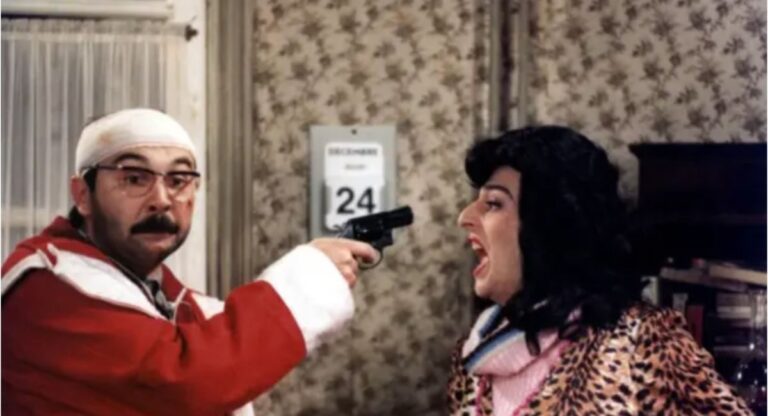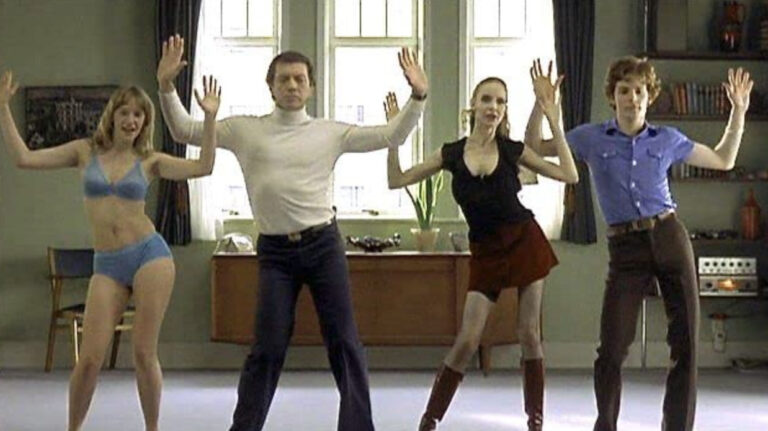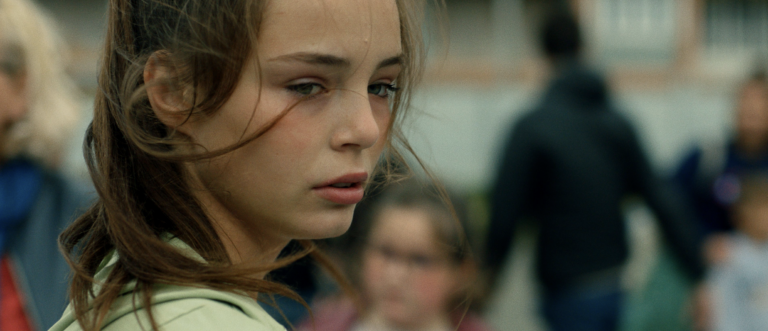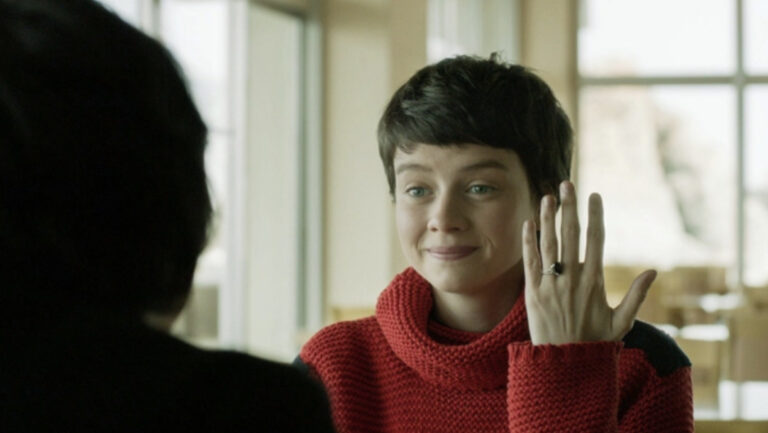When we first meet Anaïs, she’s running—down the street to buy flowers, home to convince her landlady not to evict her. Arriving flustered and flushed, she talks nonstop about her recent breakup, her financial woes, her doubts about love, does the landlady love her husband? Is love even really a thing? She’s a blur of motion and emotion, running her fingers over her books, taking off her dress and putting on a new one right in front of the stunned landlady. Anaïs (Anaïs Demoustier) is chiante comme tout, but you can’t help admire the way her mind spins, swerves, and dives. And then she’s off. In a new dress, flowers in fist, she drags her bike into an elevator—she lost her lock—then leaves it in the cramped elevator with a man she just met, because she’s suddenly claustrophobic. The man is Daniel (Denis Podalydès), an older successful publisher she lets seduce her, only to find herself drawn less to him than his girlfriend, Emilie (Valeria Bruni Tedeschi), an author she admires. Welcome to the world of Anaïs!
Andrea Meyer talked to Charline Bourgeois-Tacquet, the writer and director of Anaïs in Love, about speed, stillness, desire, and writing characters a lot like yourself.
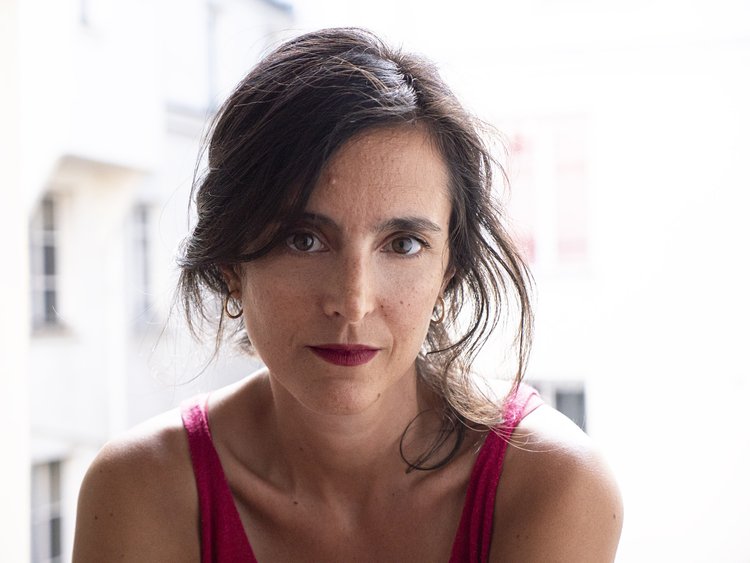
Where did this story and the character, Anaïs, come from? What was the first spark for you?
The character Anaïs and her personality were inspired by me—my personality, my life, things I’ve lived. I reworked the material to bring out the comedy, but the departure point was my life. I’m sorry to be so intimate with you so soon, but the film is what we call in French, “autofiction,” autobiographical fiction, so it’s based on my life. I was involved with a married man who talked to me a lot about his wife. I had the impression that she and I had a lot in common and I grew curious about her and wanted to meet her, and that gave me the idea for the film. I decided to write about a love triangle, where a young woman becomes fascinated with her lover’s wife and, ultimately, falls in love with her.
How are you like Anaïs? How are you different?
We share an energy, a vitality, a speed, a taste for intensity, for absolutes, a taste for love, actually, a sort of obsession with love. We also both live in the moment. Like her, I tend to follow my desires, but she’s more neurotic than I am, crazier. She has this habit of talking too intimately with strangers — sharing intimate details about her life with whomever will listen without waiting for them to respond. I don’t do that! I added those aspects of her personality because the film is a comedy.
Anaïs never stops moving, thinking, talking. She’s irritating, inappropriate, and self-involved, but also quirky and strangely adorable. She has two speeds: rushing and totally still. The first time we see her slow down is with her mother. They talk calmly about her mom’s illness, then Anaïs runs off and dives into the sea. Also, when Anaïs discovers Emilie’s things at the house she shares with Daniel, we see real stillness. Time slows down. It’s in such a sharp contrast to her crazy rushing.
No one ever mentions that scene, when Anaïs first notices Emilie’s things in the bathroom. I’m so happy you picked up on it. For me, it is a real turning point. This small shift in rhythm prefigures a larger shift in the rhythm of the film. It almost splits the film in half. There’s a shift at that moment that corresponds to a change in her life. She leaves Daniel to follow Emilie to Brittany, and the film’s tempo and tone change. There’s a different sort of stillness here than the scene you allude to with Anaïs’ mother. There, we see for the first time that Anaïs is able to access real emotion and able to be attentive and present, but rather than sitting with her difficult emotions, she flees and goes swimming. She has to get back in touch with her body. It’s her coping mechanism. She’s a person who’s always moving. If she stops she’ll have to deal with things, and she avoids that. Her way of always rushing forward is a matter of survival for her. If she stops, she might crumble. But always being in motion can be exhausting—for her, and for us, the spectators.
She’s impulsive, reckless, irrational, she’s a mess! The bike she’s always hauling around, her elevator phobia, her inability to pay rent, the broken appointments, love affairs, and promises. She’s unreliable and cruel at times. She uses her mom’s cancer as an excuse to blow off work. My question is—are we supposed to like her?
This is another good question. In writing her, I was never afraid we’d grow tired of running after her. I pushed her excesses to make her a colorful person. I knew people would be irritated by her, or even find her unbearable, but I was interested in writing a character who’s complex, who isn’t just cute and likeable. I was helped by the fact that I made a short film with [the actress] Anaïs Demoustier [who plays Anaïs] in 2018. That girl is so incredibly likeable! When you meet her, you love her immediately. I thought whatever the character does, it will be hard not to like her if she’s played by Anaïs.
The film has a lot of style, from the very first scene. The flowers, the music, every detail really drops you into this stylish Parisian world.
I was a little obsessed with controlling every aspect of the film. I worked really hard on the costumes with the costume designer, the production design with the production designer. I was very involved with the visual part of the filmmaking. I even personally chose the books that would be on the shelves. I had very clear ideas about the whirlwind of vitality I wanted to open with—the flowers, the rushing, the color, Anaïs’ little dress. I wanted the film to explode with life. It corresponds to my personality. I envisioned making a film in summer that would have that joyfulness and light, all that movement reflected by the environment, the weather. I also knew the film would then shift toward something else, in terms of the rhythm, the light, the colors. The rhythm changes and brings us toward a final scene indoors that is a conscious departure from the rest, from the whirlwind I began with. I knew it would become darker and calmer, the colors more somber. It would slow down. I always knew that would be the trajectory of the film—Anaïs would suffer and then she would evolve.
What are your cinematic influences? I thought about Eric Rohmer and Woody Allen.
Voilà, I love the films of Eric Rohmer. Ma Nuit Chez Maud is one of my favorite films, and I’ve also seen Manhattan many times, which is significant. Also, there’s a film by Jean-Paul Rappeneau called Le Sauvage (Loves Like Us) with Catherine Deneuve, which is very important because there’s a character like that who is irresistible and unbearable, just like Anaïs, and I rewatched César et Rosalie by Claude Sautet. It’s also a comedy about a love triangle, and I watched it to see how the characters deal with that situation.
The film offers a philosophical debate about desire. Emilie insists what Anaïs feels for her isn’t love, it’s projection. Anaïs certainly admires Emilie and wants to be like her, a beautiful, talented writer who has achieved her professional dreams. So, in a way Emilie has a point. Yet Anaïs says, “No, you’re wrong.” To her love is the thing. Desire is what matters in itself.
They are really in different places in their lives. Anaïs is barely 30 years old. She doesn’t know what she’s doing with her life, she just takes risks. She puts so much weight on love. She really lives in the present, whereas Emilie doesn’t want to upend her life. She can’t just throw everything away for a love affair. Me, I adore love. It’s central to my life. It’s often believed that it’s men who put their career first and love isn’t at the center of their existence. I love the idea of a woman character who says, “Yeah, love it great, but it isn’t the only thing that matters.” There’s a lot going on. There’s the age difference, there’s Anaïs who risks everything for love, who lives completely in the present. Me? I love life, and I’m all about love.
Anaïs in Love opens in theaters April 29 and on VOD May 6.
Andrea Meyer has written creative treatments for commercial directors, a sex & the movies column for IFC, and a horror screenplay for MGM. Her first novel, Room for Love (St. Martin’s Press) is a romantic comedy based on an article she wrote for the New York Post, for which she pretended to look for a roommate as a ploy to meet men. A long-time film and entertainment journalist and former indieWIRE editor, Andrea has interviewed more actors and directors than she can remember. Her articles and essays have appeared in such publications as Elle, Glamour, Variety, Time Out NY, and the Boston Globe.






